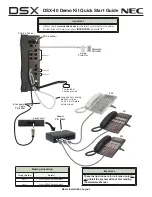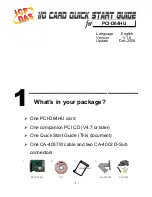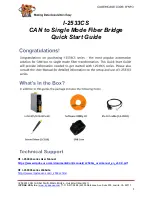
Page 10
Copyright © 2005 - ASR Electronics. All rights reserved.
Now is a perfect time to cut off the “ears” on the top
of the harness connector. They seem to serve no
useful purpose, and in fact get in the way of the pin
assembly you’re going to mount there. Cut them off
flush with the top of the connector with sidecutters or
a trimmer knife –
carefully
.
However, we’re not quite finished with trim panels yet. The console lower side panel on the left side must be
removed to allow routing of the lead-out cables, and to allow re-fitting of the connector sockets once the
cradle is refitted to the car. (it’s a lot easier to press them back into position from behind the assembly)
Firstly though the glovebox must be removed. Don’t worry, it’s not as hard as it sounds.
(Note: Left hand drive cars will not require glovebox removal, but you may have to remove the flip-down
panel below the steering column.)
First empty it out, then lift the glovebox slightly off the bottom stops. On each side you can see the rubber
wedge shaped stoppers – ease the bottom edge of these towards the inside of the glovebox, and slide them
downwards to remove them. Now allow the glovebox to drop all the way down, then grasp the top edge and
pull it towards you – it should pop out of the hinge clips at the back on each side.
Now remove the two screws retaining the front mounting flange on the lower console panel, and the single
screw about halfway along the bottom edge of the console. You need to slide the passenger seat all the
way back, and it’s still hard to get to. With these screws removed the lower panel should now lift away.
At this point, grab a cup of tea or coffee and have a break – you’ve done well!
While you’re having a breather, check on the progress of the epoxy. With any luck it will have started to gel
off now. It might still be sticky, but should be starting to firm up. Now leave it alone again.
OK, we can start working on the cradle. Take the printed template and peel back the release sheet from the
bottom but only 10-15mm. Fold the release sheet back against itself and crease it down firmly. Now line up
the cutout in the template with the top cutout in the back of the cradle and press down the template where
the release sheet has been removed. When this is nicely stuck down, peel the release sheet the rest of the
way off and rub the template down firmly. (support the inside rear panel of the cradle when you do this, or
it’ll bend)
The rounded rectangular area printed on the
template is the metal we need to remove. Begin by
gently centre punching the crosshairs at each end of
the slot and pilot drill these with a 2.5-3mm bit, then
run through with a 5mm bit. Again, support the
cradle from the inside whist doing this.
Use a rotary cutting tool, and remove the strip of
steel in between the lines. Try not to cut outside the
lines, we don’t want to remove any more metal than
we need to. Now the template can be removed and
the edges of the slot cleaned up with some needle
files. Make sure any flash from the cutting and
drilling operations is removed - should it become
dislodged later it could cause shorts.




































